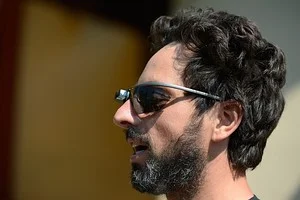SUN VALLEY, ID - JULY 12: Google co-founder Sergey Brin (L) wears Project Glass prototype glasses at Allen & Company's Sun Valley Conference on July 12, 2011 (Image credit: Getty Images via @daylife)
Google Glass has plenty of novelty about it. When GoogleGOOG-0.28%Ventures teamed up with two venture capital firms, KPCB and Andreessen Horowitz, to fund the Google Glass ecosystem, apart from the excitement of wearable computing we also witnessed the emergence of a new kind of business model and a new approach to innovation.
We have seen business ecosystems before. Apple is the classic ecosystem, with tens of thousands of developers producing for its iconic iPhone and iPad products. But Steve Jobs only released an SDK for third partyapplications for the iPhone in March 2008, 9 months after the phone’s release, and after it was already a clear success.
But in the case of Google Glass there is no commercial product. And it is hard to argue that Glass is a Google invention.
5 Ways to Make Google Glass BetterPeter CohanContributor
Google Fiber and Google Glass Could Also Come To NothingHaydn Shaughnessy Contributor
Wearable computing of exactly this kind is already in the market. Vuzix, for example, looks a whole lot better by pretending not to be a pair of glasses.
And there are competitors like Telepathy hoping to get there before Google.
But Google, itself, so far has a $1500.00 Explorer version, or, put another way, a high cost developer entry price.
What Google has done by going to a developer program first and by holding competitions such as #ifihadglass is a neat hybrid between acknowledging it doesn’t really know what to do with a glasses-like heads up display, and a well-tiered, crowdsourced attempt to find out.
But most crowdsourcing projects revolve around existing products and existing markets – the big ones, remember, are MyStarBucksIdea and Dell’s Ideastorm. In those projects the public is asked to help improve a product or service. But Google has asked people in at the invention phase, in essence asking people to help them invent what this product should do, if it were widely, commercially available.
And it has orchestrated that with great skill. It is only two months ago that Sergey Brin expressed doubt that Glass would ever make it to market and here it is, the hot topic in tech circles.
So let’s look at the components and see if it is a new innovation model for other companies to follow:
1. Product idea – Consumer heads up displays. Can specialist HUDs, a proven product, be adapted to consumer environment?
2. Validation – crowdsourced competition to find out what they might be used for, following high profile publicity campaign for possible hardware product.
3. Rapid evaluation of ideas to maintain momentum.
4. Ecosystem formation. Select developer community and line up “ecosystem”.
5. Financing. Put development funding in place – form venture capital alliance.
6. Propose tentative launch date….and iterate public validation with product development.
I think this is pretty audacious and a potentially brilliant case study in how to do innovation that has potentially huge pay-offs at ultra-low financial and development risk. It’s almost lean but far too large to fall into the lean start-up category.
The project is well hedged. Google’s own investments will be relatively low, even after the invention phase is over. The developers bear that cost.
The majority of the risk lies in not getting the product right and having to close the project down. But that is a reputation risk not a financial one, because Google will have laid out very little in cash. The hedge is “this is an experiment” and “we wanted to explore the possibilities and create some excitement”. That’s true and so is the final hedge – who lost anything by it really?
GE tried to do something similar with its healthymagination project, where GE promised $ 1billion for health research in an open innovation environment. GE’s goal is to create a new type of ecosystem for cancer research. You may not have heard of it. The first segment of that consisted of selecting 5 groups to work on new cancer diagnosis, care and cure projects.
But look at the difference in scale. There look to be about 2,000 Explorer or developer devices and a further 8 – 10,000 for winners of If I Had Glass. And no way is Google going to spend $1 billion.


